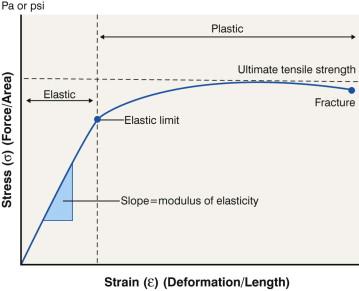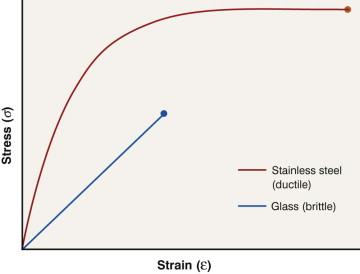Physical Address
304 North Cardinal St.
Dorchester Center, MA 02124
A dermatologic surgeon's skill depends upon knowledge of basic instrumentation and wound closure materials. Knowledge of the basic engineering principles such as stress–strain and basic metallurgy is an essential prerequisite to understanding instrumentation and materials.
Investing in high-quality instruments that are practical for the range of procedures performed helps the dermatologist perform procedures with skill. Every instrument has proper uses and handling methods.
Proper maintenance will enhance the longevity of surgical instrumentation and protect the surgeon's investment. Knowledge of the properties of surgical stainless steel allows one to make sense of why certain detergents and cleaning procedures should be employed.
Wound closure materials may be ordered according to the type, size, length, and color of suture material, as well as the type and size of the attached needle. Standards for sutures in the USA are governed by the US Pharmacopeia (USP) standards, which are based primarily on diameter and maximal tensile strength of suture strand.
Procedure surgical trays can improve the efficiency and safety of office procedures.
In discussing materials, the concept of stress and strain ( Fig. 4.1 ) will repeatedly arise. A stress is a pressure, tension, or shear applied to a material. Tensile stress is defined as a force per unit area and is measured in Newtons per square meter (N/m 2 ), Pascals (Pa) (1 N/m 2 = 1 Pa), or in pounds per square inch (psi). Strain is the resulting deformation in the object and is measured as the fraction of the deformation to the original length for a tensile strain (%). When a material is minimally stressed, it is often able to return to its original form if the stress is removed in a timely fashion. This is the elastic portion of the curve. If stress is applied beyond a certain threshold, permanent deformation will occur in the so-called plastic region of the curve. Yield point is the point at which plastic deformation begins to occur; breaking point is the point at which the material fractures. Each point has a corresponding strength and elongation at which it occurs. Maximal tensile strength is the highest point of the tensile strength curve and is often higher than the breaking point strength. The slope of the elastic portion of the curve is called the modulus of elasticity . This reflects the material's resistance to elastic deformation or tensile stiffness . The modulus of stainless steel used in suture needles, for example, is approximately 200 GPa. The moduli of elasticity of suture materials are in the range of 0.5–3 GPa.

A classic dichotomy contrasts a ductile material, such as stainless steel, versus a brittle material, such as glass ( Fig. 4.2 ). Once glass reaches its elastic limit, it will break instead of undergoing plastic deformations. Stainless steel, on the other hand, is ductile and able to withstand a great degree of elongation beyond its yield point.

The materials used to fashion surgical instruments have largely been a reflection of the popular materials of that age. Instruments from the late Roman era (1st–4th century ad ), were primarily made using copper alloys. From the seventeenth to the nineteenth century, steel grew in prominence along with a smaller proportion of nickel-plated instruments. After the introduction of stainless steel in the early twentieth century, practitioners and instrument manufacturers rapidly adopted it. By 1938, 60% of surgical instruments were made of stainless steel and by 1963, that proportion had reached over 90%.
All steels, including stainless steel, are alloys composed of primarily iron with small amounts of carbon and other elements. Chromium imparts corrosion resistance in stainless steel and must be present at a content of at least 10.5% to receive the designation “stainless steel”. Increasing the proportion of chromium in steel will impart a parabolic decline in its propensity to corrode due to the formation of a small “passive” layer of chromium oxide (Cr 2 O 3 ) on the surface. While it is only a few nanometers thick, the passive layer prevents the iron within the steel from interacting with oxygen and salts to corrode. Damage to the passive layer of Cr 2 O 3 can also immediately “self heal” in that free chromium atoms on the surface of the alloy will become oxidized to “heal” the layer.
Stainless steel is further subdivided based on its crystal structure. The iron atoms within the steel can assume various configurations (outlined in Table 4.1 ). Ferrite has the same body-centered cubic structure as found in pure iron in which atoms are found at the corners of a cube and one in the center. If heated past 900°C, ferritic steel can assume an austenite structure with a face-centered crystal structure. If then slowly cooled back to room temperature, its face-centered structure returns to the body-centered cubic ferritic form. Addition of nickel to the alloy will allow stabilization of the austenitic structure at room temperature. Hence, all austenitic steels contain nickel ( Table 4.1 ). If ferritic steel is heated above 900°C and then cooled quickly (a process called quenching ), it can form a structure in which the cube is stretched in one direction (body-centered tetragonal) and is saturated with carbon: martensite . In its “as-quenched” form, martensitic steel is very brittle, making it difficult to form. Further heat treatments ( tempering ) improve ductility and are a mainstay in the production of martensitic steels. Martensitic steels are the most used in dermatologic surgery instruments.
Duplex and precipitation hardening steels, the other two major categories of stainless steel, are not found in most standards for surgical stainless steel and will not be discussed further. The properties of each type of stainless steel are summarized in Table 4.1 .
Finally, there are a variety of engineering and standards bodies throughout the world, each with its own nomenclature for materials, including stainless steel. The American Iron and Steel Institute (AISI) uses a 3-digit code, often with a modifier (e.g., 316L). The United Numbering System (UNS) uses the AISI code, then adds two extra digits and the “S” prefix for stainless steel (e.g., S45500).
Small surface irregularities can contribute to difficulty in cleaning and maintaining hygiene in instruments. Roughness can be formally evaluated in stainless steel by measuring the peaks and valleys in micrometers (µm) and averaging the results to the roughness average (Ra). A smaller Ra (e.g., <0.5 µm) will provide a smoother surface and make cleaning easier. Electropolishing uses an electrochemical process to allow manufacturers to obtain these small roughness values and smooth finishes.
Scalpels can be either completely disposable or have reusable handles with disposable blades. The latter allows for easier customization as there are a variety of both handles and blades. The most common scalpel and blade system used in dermatologic surgery is the Bard–Parker. Numerous handle options are available, each of which can connect with a variety of blades. (See ![]() .)
.)
Non-scalpel blades used in dermatology can be used to perform simple biopsies or even harvest small split-thickness grafts. Specialized dermatomes are available for larger split-thickness grafts. (See ![]() .)
.)
Scissors have the largest breadth of options for the dermatologic surgeon: general operating, dissecting, suture, and bandage scissors. They should generally be held with the thumb and ring finger on the rings with the index finger on the fulcrum. Three forces are at work while operating scissors: closing, shear, and torque forces. (See .)
The needle driver is used to grasp circular needles to protect the operator from injury and help apply rotational force to the needle. There are four main grips to holding the needle driver: thumb/ring finger, thenar, palmed, and pencil. The needle should usually be placed perpendicular to the driver jaws, being careful not to damage the tip or swage. (See ![]() .)
.)
Ancillary surgical instruments include forceps, skin hooks, curettes, punch biopsies, nail plate instruments and staplers. (See ![]() .)
.)
Become a Clinical Tree membership for Full access and enjoy Unlimited articles
If you are a member. Log in here